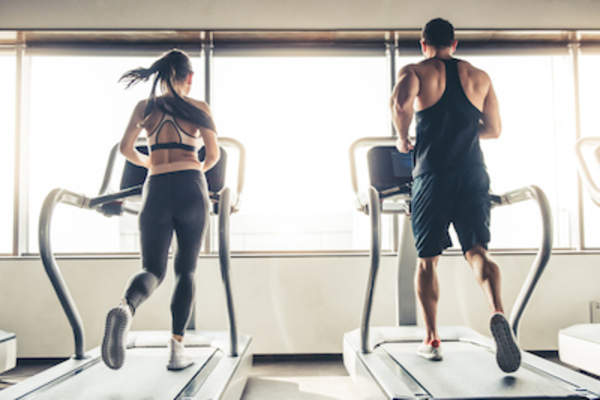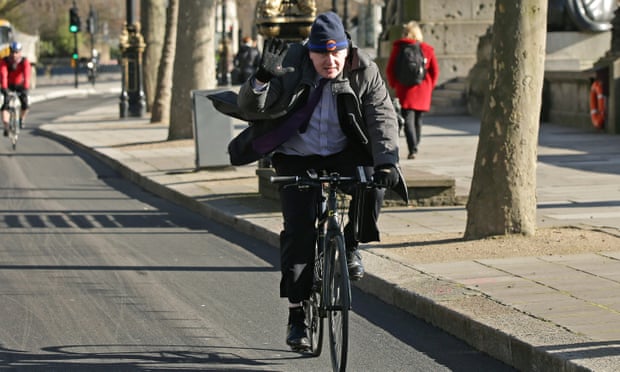by Travis Saunders

Regardless of your shape or size, physical activity has been shown to add years to your life, and life to your years. But believe it or not, the benefits of physical activity are not restricted to exercise performed in the gym. In fact, one of the easiest ways to improve your health may be through increasing the amount of low intensity physical activity you perform throughout the day. For example, simply increasing the number of steps that you take each day is very likely to reduce your risk for diseases like diabetes and cardiovascular disease. It’s still uncertain if this light intensity physical activity can reduce body weight, but it is clear that individuals who engage in high amounts of light intensity physical activity are healthier than those who do not. In fact, there is good evidence to suggest that simply reducing the amount of time spent sitting each day may reduce risk of death independently of other lifestyle factors (for one previous post on this topic, click
here).
Peter and I have discussed the importance of daily physical activity in several posts over the past few months, so today we have decided to offer some practical ways that you can incorporate physical activity into your daily life. These are tips that we have found work well for us, and we think they may work well for you as well. Try one or two, and once they’ve become part of your routine try a couple more. We would also love to hear your own tips in the comments section below.
Without further ado, here are ten simple ways to become more physically active:
1. Take the stairs as often as possible.
This one is as simple as it sounds. If you have to go up two floors or less, opt for the stairs. Ditto if you have to go down three floors or less. If you have to go up or down a distance that is too great for you to walk at the moment, walk the first few flights, then take the elevator the rest of the way. Remember, every time you take the stairs instead of the elevator or escalator, you are making a decision that will positively affect your long term health.
2. Drink plenty of water.
This sounds odd, but it’s a trick that I’ve been using for years. If you are constantly sipping water throughout the day, you are going to have to pee at least once an hour. Every time you have to pee, you have a guilt-free excuse to go for a 5-minute walk to the washroom and back! To crank it up a notch, use a washroom in another part of your building, which may give you an opportunity to use the stairs as well. It’s easy to forget to take a 5-minute walk-break every hour, but it’s impossible to forget to go pee.
Added bonus – staying well hydrated may also reduce feelings of hunger, and can often reduce chronic back pain. So this is really a win-win-win.
3. Park as far from the front door as possible.
Another simple but effective tactic. Whether you’re at the mall, work, or school, parking the car at the edge of the parking lot forces you to walk just a little bit further than you are used to. It will only add a few seconds to your trip, but if you do it everyday it could add years to your life.
Added bonus – less chance of getting dinged by shopping carts and teenage drivers.
4. Clean your home regularly.
I’ve got to admit, this one was Peter’s idea (as any of my former roomates can attest, cleaning is not my forte). Most people don’t realize what a good workout cleaning can be, especially if you have a large home. Cleaning involves plenty of walking, lifting, and stretching – all of which are very good for your body. Washing dishes by hand can also be an easy way to burn a few extra calories, and to spend some time chatting with other members of your family (I spent many hours drying pots and pans for my Mom growing up).
5. Gardening and yardwork.
Yardwork is great because not only does it increase your physical activity, but it also gives you an excuse to be outside. Pulling weeds, mowing the lawn, trimming the hedge, and raking leaves are all very physically taxing and like cleaning, they use a range of muscle groups.
6. Disconnect your cable for the summer.
Time spent watching TV is an independent predictor of disease, especially for kids (for a great article on the topic by Ekelund and colleagues, click
here). It’s not surprising when you think about it – the only time that most kids aren’t moving around is when they’re sitting in front of the TV. Get rid of the cable, and suddenly you’ve got one less reason to spend your days sitting on the couch. If you’re like me, after a few weeks without cable, you might start to wonder why you ever had it in the first place. And if, like me, you need to watch the NHL playoffs – walk to the local pub/sports bar with your friends on game night.
7. Buy a pedometer.
Pedometers are beeper-sized gadgets that count the number of steps that you take each day. They are a terrific way to measure the amount of physical activity you are getting each day, and can also serve as a great motivator to make the decision to walk whenever possible. Aim for at least 10,000 steps each day, but any increase is likely to bring health benefits, so don’t feel bad if you can’t get up to 10,000 right away. A high quality pedometer costs just $20, and are available online from Speakwell, a Canadian company based in British Columbia.
8. Use active transportation and public transit.
I have only been living in Ottawa for a week, but already I am in love with the bike paths. I have a beautiful 20 minute bike ride to work each day, and I can’t imagine a better way to start the day. It takes about 4 minutes longer than driving (but is significantly cheaper since there’s no parking fee to lock up my bike). Walking, roller blading, and biking are all great ways to get around, and they often take a lot less time than you’d expect.
If the trip is a little too far to hoof it, consider taking public transit. As researcher Ugo Lachapelle discussed in a recent interview here on Obesity Panacea, individuals who take public transit are more likely to meet physical activity recommendations than those who don’t take public transit. This is because most transit trips involve at least some walking to and from stops. And remember that most major cities have bike racks for buses in the summer, and allow bikes on trains during off-peak hours.
Many workplaces offer free or discounted transit pass programs, so be sure to check if your employer has such a program.
9. Have “walk-meetings”.
In an ideal world, we would all have 45 minutes for a relaxed lunch. If you happen to enjoy this luxury, consider taking half your lunch break to go for a walk either alone or with someone else you work with. It will help wake you up for the afternoon, as well as giving you a chance to chat with your co-workers (you could even use it to kickstart that workplace romance you’ve been planning for so long).
If you don’t have time to take a large walk break at lunch, consider having “walk-meetings”. Whenever you have to meet informally with co-workers, turn the meeting into a short walk. If it takes 5 minutes to discuss the project you are working on, that means you just got 5 extra minutes of physical activity! Peter and I used to frequently walk to the local grocery store on our lunch break, all the while discussing projects we were working on. It was a chance to get out of the lab, to talk about our work, and to get some physical activity all at the same time.
10. Go for a family walk after dinner.
This one was Peter’s idea, but I have to admit that we did this almost every night when I was a kid in my family as well. My sister and I would hop on our bikes, my parents would walk behind us, and the four of us would go for a half hour trip around the neighborhood. It’s another chance to spend some time together, get outside, and get some exercise all at the same time.
—————————————————
As you can see, none of the tips we’re suggesting is earth shattering. In fact, most of them are things you could start doing immediately, and cost absolutely nothing at all. Like I mentioned in the introduction, try out the tips that seem most realistic for you at this point in your life. Once you’ve mastered them, consider trying a couple others. And please share with us your tips for making physical activity a part of your day!
Disclaimer: While the activities we have suggested are all low to moderate intensity, speak to your physician if you have any health concerns before increasing your physical activity levels. The information here should be used as a general guide only, and should not be construed as specific medical advice. Also, work place romances are usually a bad idea, so be careful with that as well.
Travis







